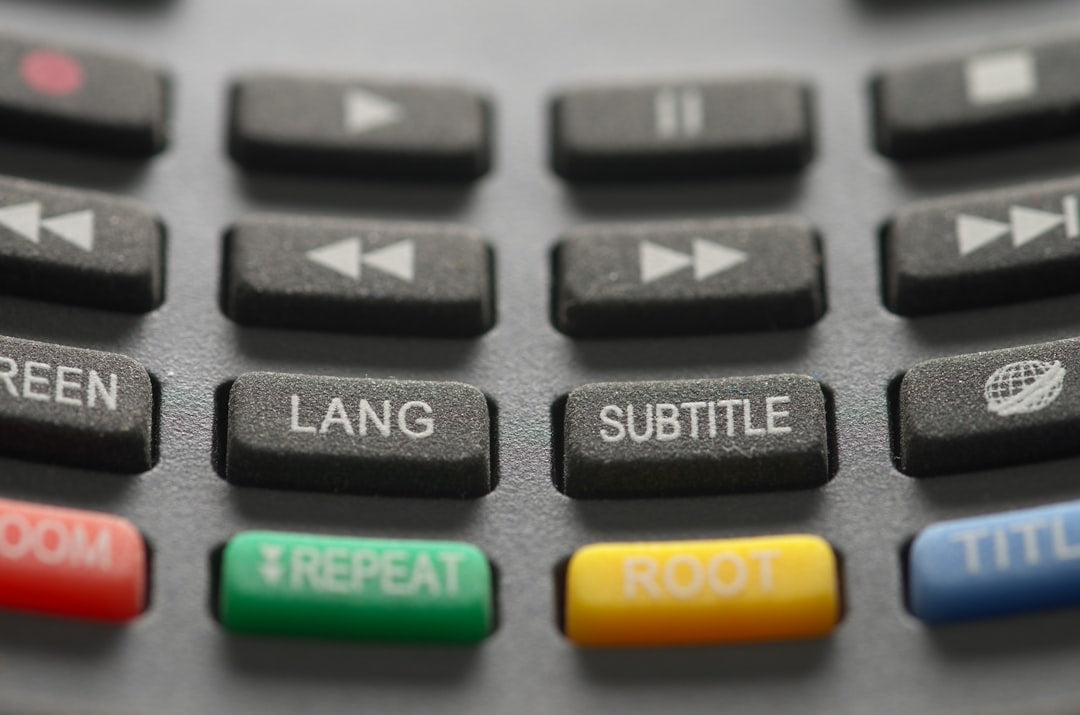Television has come a long way since its inception, not only in terms of visual quality and entertainment value but also in terms of accessibility for individuals with hearing impairments. For the hard of hearing, watching TV can sometimes be a challenging experience, but advancements in technology have made it easier for everyone to enjoy their favorite shows and movies. Let's explore how TV technology is catering to the needs of the hard of hearing community.
The Rise of Closed Captioning
One of the most significant advancements in TV technology for the hard of hearing is the widespread availability of closed captioning. This feature provides a text display of dialogue and other audio elements on the screen, allowing viewers to read along with the content. Closed captioning has become a standard feature on most TVs and streaming services, making it easier for individuals with hearing impairments to follow along with their favorite programs.
Enhanced Audio Technologies
Aside from closed captioning, TV manufacturers have been incorporating advanced audio technologies into their products to enhance the viewing experience for those with hearing difficulties. Features like speech enhancement, audio description, and personalized audio settings allow users to customize their sound preferences based on their specific needs.
Wireless Headphones and Bluetooth Connectivity
Wireless headphones and Bluetooth connectivity have become increasingly popular in the world of TV technology. For individuals with hearing impairments, wireless headphones can provide a more immersive audio experience by delivering sound directly to the ears without interference from background noise. This technology allows viewers to adjust the volume to a comfortable level without disturbing others in the room.
Smart TVs with Voice Recognition
Smart TVs equipped with voice recognition technology have revolutionized the way people interact with their televisions. For individuals with hearing impairments, voice commands can be a game-changer, allowing them to control the TV and navigate menus using just their voice. This hands-free approach simplifies the user experience and makes TV more accessible to everyone.
Accessibility Settings and Customization Options
Many modern TVs come with a range of accessibility settings and customization options that cater to individuals with hearing impairments. These settings allow users to adjust things like volume levels, sound frequencies, and audio balance to suit their specific needs. With just a few simple adjustments, individuals can enjoy a personalized viewing experience that enhances their enjoyment of TV shows and movies.
Integration with Hearing Aid Devices
Some TV models now offer compatibility with hearing aid devices, providing a seamless listening experience for individuals with hearing impairments. By connecting their hearing aids to the TV, users can stream audio directly to their devices, eliminating background noise and ensuring clear sound quality. This integration enhances the overall viewing experience and improves accessibility for those with hearing difficulties.
Real-Time Transcription Services
Real-time transcription services are another innovative feature that is changing the way individuals with hearing impairments watch TV. By providing live transcriptions of dialogue and audio cues on the screen, these services ensure that viewers never miss a word of their favorite shows. This technology is particularly beneficial for live broadcasts and news programs, where accuracy and speed are essential.
Mobile Apps for Remote Control and Accessibility
Many TV manufacturers now offer mobile apps that allow users to control their TVs remotely and access additional accessibility features. These apps can be especially useful for individuals with hearing impairments, as they provide a convenient way to adjust volume, enable closed captioning, and fine-tune audio settings from a smartphone or tablet. This level of control enhances the overall TV-watching experience and puts the power in the hands of the viewer.
Collaboration with Accessibility Advocates
As TV technology continues to evolve, manufacturers are increasingly collaborating with accessibility advocates and organizations to ensure that their products meet the needs of individuals with hearing impairments. By soliciting feedback and incorporating suggestions from the hard of hearing community, TV manufacturers can create products that are truly inclusive and user-friendly for all viewers.
Empowering the Hard of Hearing Community
Overall, the advancements in TV technology are empowering the hard of hearing community to enjoy television in a way that was not possible before. From closed captioning and audio enhancements to wireless headphones and real-time transcriptions, there are now more options than ever for individuals with hearing impairments to customize their viewing experience and immerse themselves in their favorite programs. With continued innovation and a focus on accessibility, TV technology is opening up new possibilities for all viewers, regardless of their hearing abilities.
Join the Accessibility Revolution
As TV technology continues to advance, it's essential to stay informed about the latest developments in accessibility features and options. By embracing these innovations and incorporating them into our viewing habits, we can create a more inclusive and enjoyable TV-watching experience for everyone. Let's celebrate the progress that has been made in catering to the hard of hearing community and support further advancements in accessibility for all.
Explore another user's Shopify store by clicking here. Please note that this is a promotional link, and we assume no responsibility for the content on the linked store.

